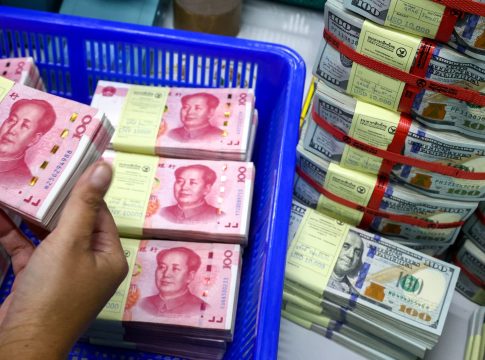China’s Push for the Yuan: A Challenge to the Dollar?
As global confidence in the U.S. dollar begins to wane, China is actively working to bolster the international use of its currency, the yuan. This shift is particularly noteworthy given the dollar’s dominant position in the global economy. Let’s explore the recent developments and what they mean for foreign investors and global finance.
A Strengthening Yuan
This year, the U.S. dollar index has dropped over 9%, while the offshore yuan has gained more than 2% against it. In a recent speech, Pan Gongsheng, Governor of the People’s Bank of China, emphasized the need to reduce reliance on a single global currency. His remarks, made at the Lujiazui Forum, indicate strong intent from Beijing to shift the financial landscape.
Digital Currency Innovations
China is taking significant steps to promote the international use of its digital yuan. Plans to establish a center for digital yuan internationalization in Shanghai are in the works, along with efforts to facilitate yuan-denominated foreign exchange futures trading. With a digital currency already in circulation, these initiatives aim to make the yuan more accessible for global institutional investors.
Expanding Opportunities in Futures Trading
A recent announcement from major Chinese exchanges allows qualified foreign institutional investors to trade additional futures and options contracts in the commodities sector—items like natural rubber and tin. This move is essential for increasing the yuan’s influence in commodity pricing, giving global investors more reasons to engage with the currency.
Encouraging Foreign Investment
To further entrench the yuan in international markets, China is making it easier for foreign investors to engage. A recent proposal by the Shanghai Futures Exchange aims to allow foreign currencies to be accepted as collateral for trades settled in yuan. Additionally, China is waiving fees for international institutions to open local accounts, which can improve access to the country’s bond market.
The Challenges Ahead
However, the road ahead is not without obstacles. Despite these initiatives, foreign investors remain cautious due to China’s stringent capital controls and lack of transparency compared to the U.S. market. As geopolitical tensions rise, some experts argue that the yuan still lacks the dependability and liquidity that many look for in an alternative currency.
Global Shift in Transactions
Interestingly, Chinese institutions increasingly lend to emerging markets using the yuan instead of the dollar. This trend is likely fueled by lower borrowing costs and reflects a broader shift toward yuan-denominated transactions. In fact, some Chinese businesses are even benefitting from subsidized interest rates on loans paid in offshore yuan—helping paint a picture of gradual but steady growth.
Conclusion: A Possible Future for Yuan Internationalization
While recent data shows the yuan’s share of global payments dropped slightly to 2.89% in May, the efforts by China to enhance its currency’s presence indicate a long-term goal of promoting its use worldwide. With context in mind—like recent geopolitical shifts and U.S. policy uncertainties—investors should remain attentive to these developments.
As China continues to strengthen its financial systems and promote the yuan internationally, the question remains: Could we witness a gradual decline in U.S. dollar dominance? For now, the financial landscape is shifting, and savvy investors would do well to watch closely.

Writes about personal finance, side hustles, gadgets, and tech innovation.
Bio: Priya specializes in making complex financial and tech topics easy to digest, with experience in fintech and consumer reviews.

